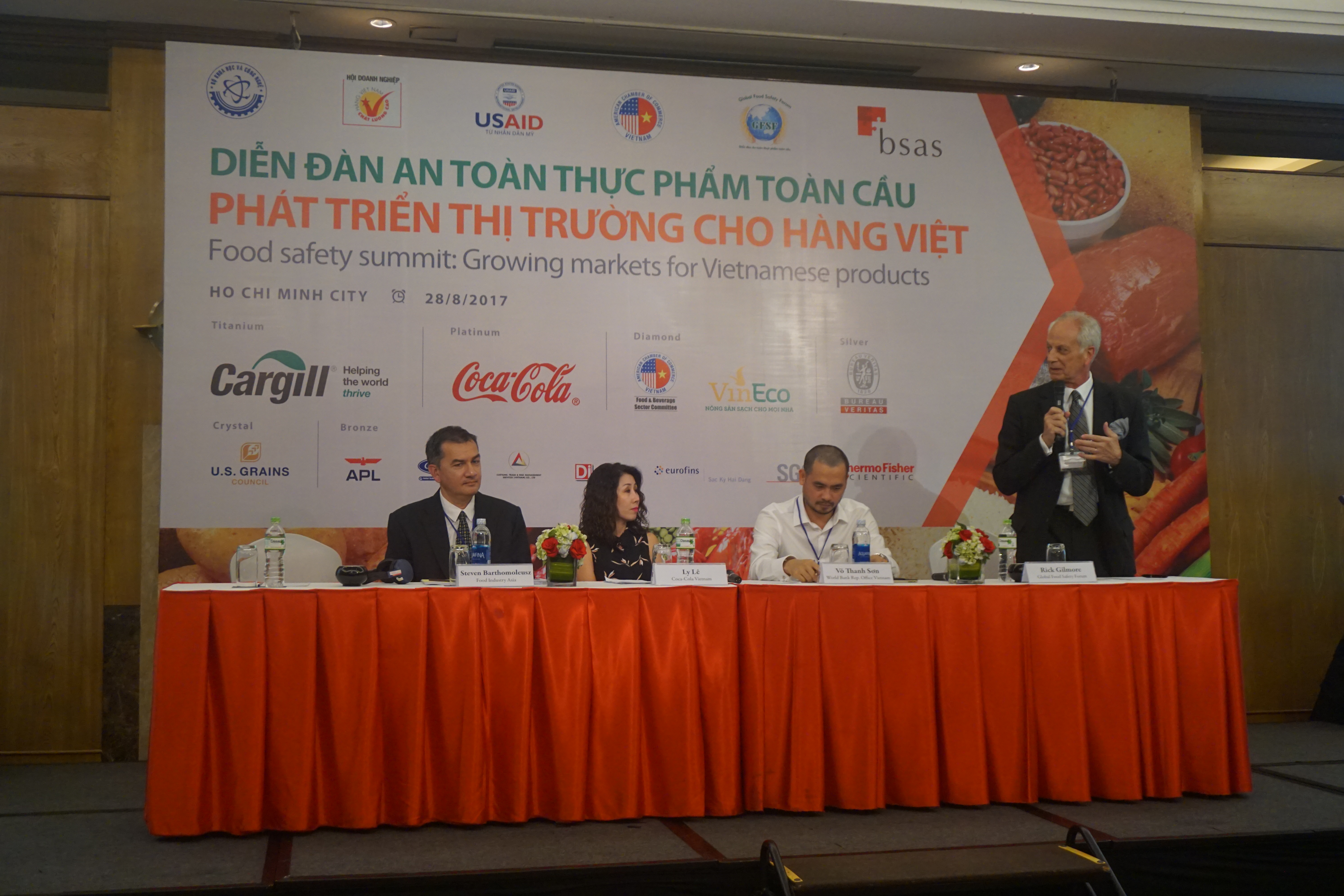Vietnam needs to step up food safety for agricultural products
 |
| Experts shared thoughts at Food Safety Summit held by AmCham in Ho Chi Minh City |
The agriculture, fisheries, and food sector accounts for 46 per cent of Vietnam’s workers, and a significant amount of Vietnamese exports.
Seafood alone accounted for $7 billion of Vietnamese exports in 2016, of which $1.4 billion of fish and shellfish exports went to the US, accounting for over 40 per cent of US’ agricultural product and food imports of $3.5 billion from Vietnam.
However, with new US food safety regulations on imports, based on the Food Safety Modernization Act and the shift in responsibility for catfish imports inspections from FDA to USDA, AmCham was concerned that a lack of awareness of the new regulations might result in a significant decrease in Vietnamese agricultural and food exports to the US, and a similar decrease of employment and incomes in the sector.
For example, in December 2016, there were 1,845 food facilities in Vietnam registered by the FDA to export to the US. However, in January 2017, this number dropped to 806. Under the new regulations, all registered facilities are required to renew their registration every two years, starting from 2016, between October 1 and December 31. However, more than 1,000 Vietnamese companies were unaware of this new requirement, failed to renew their registration, and were dropped from the list, losing the right to export to the US.
To support Vietnamese enterprises facing great challenges to export, AmCham Vietnam in Ho Chi Minh City, together with the High-Quality Vietnam Products Association and Global Food Safety Forum, organised the Food Safety Summit themed “Growing markets for Vietnamese products.” on August 28, 2017.
The summit discussed the challenges and opportunities in the global food safety area, with new food safety requirements.
Ratih Puspitasari, the representative of Cargill, said that, “There is a growing demand for healthy animal protein and other tropical food. The question is how to empower the Vietnamese food industry, to promote sustainable farming, and comply with the new FDA requirements. It is all about quality, safety, nutrition, and sustainability.”
“Clear policies that advance food safety, good production practices, strict hygienic and farming environment control, regulations for proper animal medicinal drug use, science-based animal care and well-being practices that are consistent with globally recognised standards and best practices can help open the doors of the US market and others for made-in-Vietnam food,” he said.
What the stars mean:
★ Poor ★ ★ Promising ★★★ Good ★★★★ Very good ★★★★★ Exceptional
Latest News
More News
- Vietnam GDP posts second-strongest growth since 2011 (January 06, 2026 | 08:35)
- Double-digit GDP growth within reach with shift to higher-value expansion (January 06, 2026 | 08:33)
- Ho Chi Minh City projects $10.5 billion remittance inflows in 2025 (December 31, 2025 | 18:58)
- Digital shift reshaping Vietnam’s real estate brokerages (December 31, 2025 | 18:54)
- New decree sharpens enforcement in securities market (December 31, 2025 | 18:53)
- Voluntary Sustainability Standards pave way for Vietnam’s agricultural exports (December 31, 2025 | 09:00)
- Gold market reform advances as SBV receives applications for bullion production (December 30, 2025 | 12:07)
- Textile apparel firms deliver robust earnings despite global tariff pressures (December 30, 2025 | 10:09)
- Ho Chi Minh City hits $8.37 billion in FDI (December 29, 2025 | 08:28)
- Tax sector wraps up 2025 and sets priorities for next year (December 25, 2025 | 14:00)

















 Mobile Version
Mobile Version